
Mur des-amours, 2023. Engravings on marble, gold leaf, sandstone base, dimensions variable.
Sharing his desire with the other residents to work on Love in relation to the history of the place, Timothée Chalazonitis collected exchanges of love that they had recently had with their sweethearts. From these intimate words, he selected fragments and engraved them to create a wall reflecting the varied emotions that run through us when we're "in love". A bit like Ex-Voto, the engraved plaques are hung on a wall in front of which we can to recall our past states of love and those that are still with us to this day.

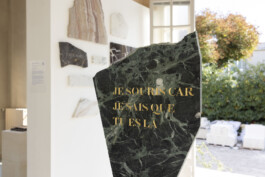
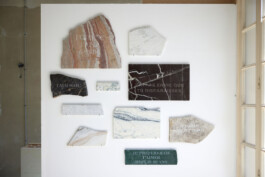
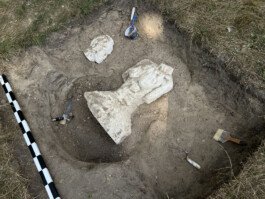
La découverte, Hand-carved stone bust and head, reproduction of documents from the archives of the city of Versailles. Dimensions variable, 2023.
The artist began her art-residency by visiting the city archives to obtain more information about the Château de La Maye, and noticed that two "famous" couples had stayed there: The Duke and Duchess of Windsor and King and Queen Geraldine of Albania. He also found a document stating that King Zog I had commissioned a Versailles sculptor to create a statue of his wife, Geraldine of Albania. And a letter recalling the couple's hasty departure due to the arrival of the Germans, who prevented them from taking all their possessions. The letter mentions that "one day they'll be able to come back and get them". This sentence stuck in his mind, and he decided to collaborate with archaeologist Matéo Martorella to help him carry out a dig in the Château garden in the hope of finding After several days of searching, they discovered a sculpted head and bust of Geraldine of Albania buried at the bottom of the Château, in the hope of being able to find them later, after the war. This archeological fiction creates exchanges between visitors and the inhabitants of Versailles, where doubts and imaginations work together to disconnect us from the present.
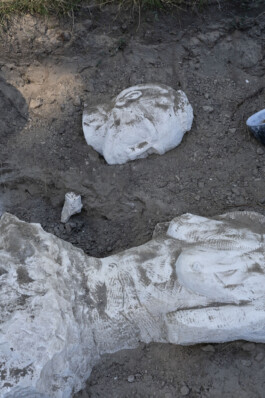
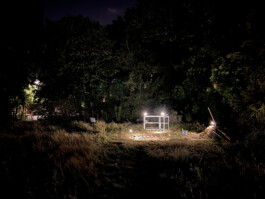
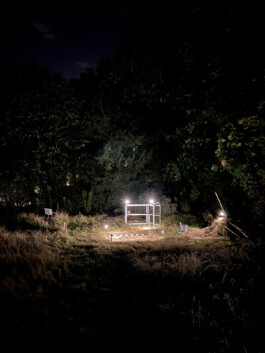

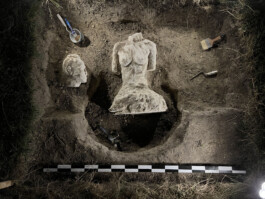
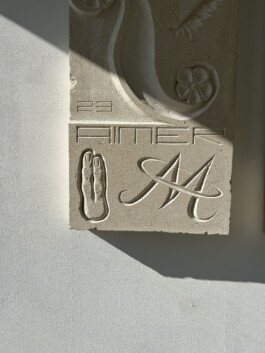
Courage et peur, Bas-reliefs carved in sand stone 60 x 30 cm, 4.5 cm thick, 2023.
This dyptique was created at the beginning of my residency. Wishing to approach a more voluminous work while linking it to the history of the site, I decided to face up to two desires that are also fears: to speak of love by working stone in volume. A bit like a notebook, these stone pages combine elements that make sense to me and link me to the person I love today.
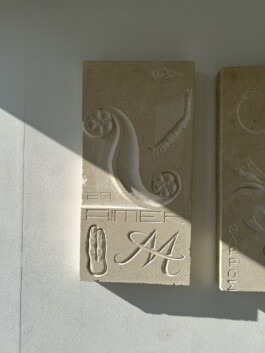
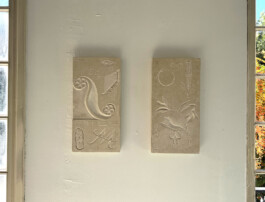
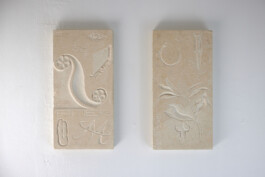
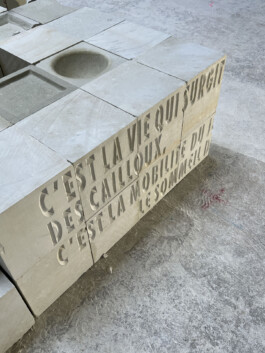
Saxifrage, 2023. Fragment of a text by sociologist Marie-Jos. Mondzain at the Saxifraga.Politica meeting in 2005.12 blocks of 25x25x25 cm in Tuffeau,in Saumur.
Engravings co-created with Bruno Coubernoux and Nobouko Nansenet. Creation project for the Académie des Savoir-faire of Hermès Fondation. Marie-José Mondzain was fond of talking about saxifrages, small plants that live in the cracks of rocks, and whose root systems can sometimes break off several-ton chunks of cliff.
"It's life that emerges in the midst of pebbles
It's the mobility of play that shakes
the sleep of things".
For the occasion, I designed a typography creating more angles, playing more with the vibrations of light.
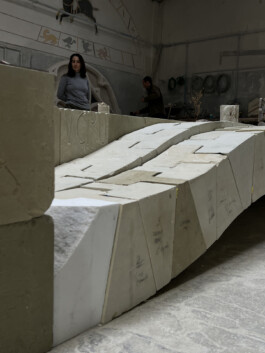
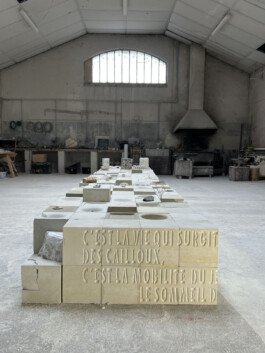
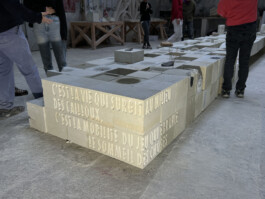

E se domani, Engraving, Sandstone, recording Luigi's singing, Tour Orion.
"What if tomorrow I couldn't see you again?
Suppose you got tired of me?
What if tomorrow, and I stress 'if', out of the
blue I came to lose you. I'd lose the whole
world, not just you".
These are the words Luigi sings to us, a cappella, in the back of his store. Along with my friends, this Venetian welcomes us to his store, amidst lots of lots of clothes and accessories bought fifteen years ago, which he sells without being in a hurry. After a few exchanges, he sits us down, climbs two small steps and sings the famous E se Domani, first performed by Mina in 1964. Without really knowing why, Luigi gives us this gift. The sound of the recording made at this moment is broadcast among the stones, those usually stored in my studio.
On a fragment of column is engraved the beginning of the song.
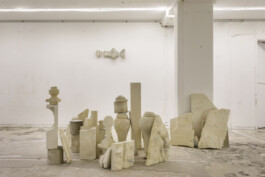

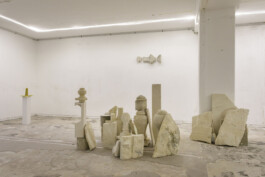
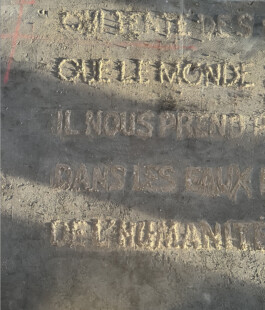
Le chant capital, Marble, Saint Maximin stone, water-repellent chipboard, metal, stone dust, dimensions variable, Orion Tower.
What would be the mermaids song of our times ?
What words could we hear that would make us want to follow them and plunge with them to the bottom of the sea ?
What promises and desires are we willing to follow at the risk of losing our sanity ?
The installation plays with the raw architecture of the exhibition space.
These bird-women prowl around the bust of Ulysses hanging from the mast. A poem is discreetly laid out on the floor, made up of the dust from the heads of the mermaids carved in stone :
"The capital song swallows up any other melody that tries to rise. It's the dominant song that the world likes to hear to reassure itself. It
grabs us by the scruff of the neck and accompanies us into the deep, dark waters of humanity."
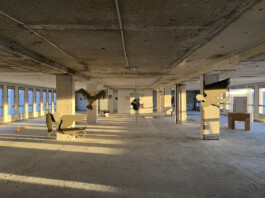
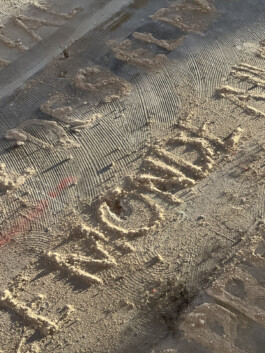
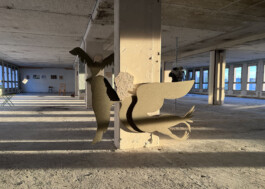
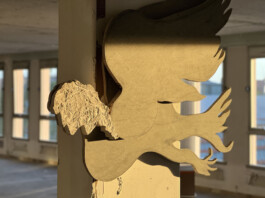
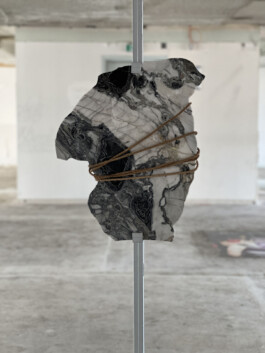
Until the end, 2023 Limestone (construction waste), engravings, ultrasound gel, charcoal and burnt walls.
Two engravings face each other: Watch until the end and Wait for it. They are hung on walls that still bear the scars of a fire. These are phrases that can be read on videos we watch daily on our social networks. They question our relationship with time and our inaction in the face of the current state life. Between these two dominant injunctions, on the floor, there's a silence etched into the concrete and rechambered by an aspect of thick black petroleum, able to reflect the spectators and the play of natural light that crosses the exhibition space. We are drowned in a flow of information and images. Everything seems designed to make us consume even more content. To draw the eye away from seeing and kill the action.
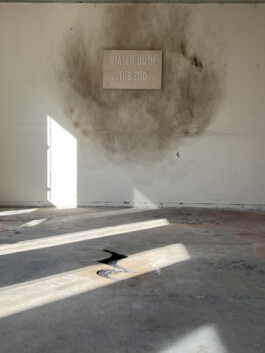

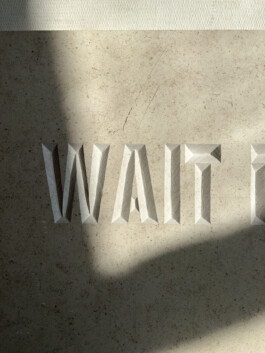
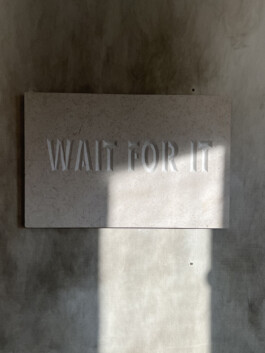
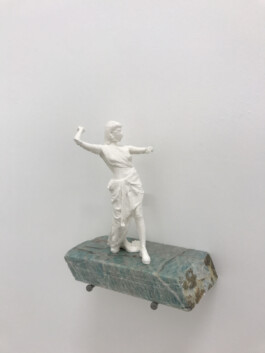
Le lancé, 2021 The throw, fine canvas printing, PLA 3D printing, marble scrap, metal. Ergologre exhibition at Espace Voltaire, orchestrated by Léo Landreau.
A colorful flag catches the wind, and is animated by the passage of the public. An image is proposed, playing between abstraction and figuration, photography and painting. We see fragments of the human body and a bright orange drape, which is the flattening of the texture of the white statuette fixed underneath.
A draped young woman holds an object in her hand, ready to throw it. Masked for protection, she hides her face and seems to be rebelling. She is the Koré of modern times, the representation of youth. In 1764, Winckelmann described Greek white as the pinnacle of art. Ancient white even became a political argument in 1830, when the Greek nation emancipated itself from the Ottoman yoke, and "purified" itself of its bright colors. Later, these statues were reproduced and distributed in plaster, enabling the Fascist and Nazi regimes to establish their theory of Aryan superiority. This rejection of polychromy has been a historical lie for centuries. women and men of ancient Greece.
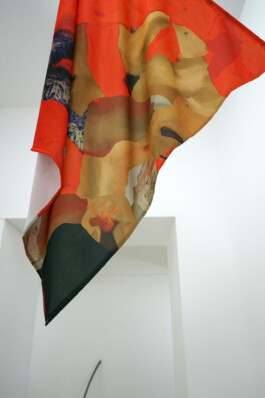
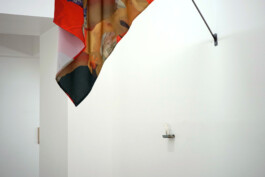
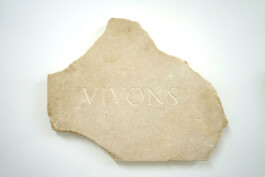
Nos Métamorphoses,2021. Our metamorphoses, trajan engraving, stones: Saint Maximin. Ergologre exhibition, at Espace Voltaire, orchestrated by Léo Landreau.
"We live in the oblivion of our metamorphoses (...) But this echo that rolls all day long
This echo out of time of anguish or caresses (...) Are we near or far from our conscience (...)".
These four lines are taken from "Notre mouvement", in Le dure désir de durer, Paul Eluard, 1946, and read in Alphaville by Jean Luc Godard, 1965. This line echoes the strange times we're living in. During the exhibition, the "DANS" plaque is sometimes removed from the wall by a performer and moved to another space. "DANS" finds itself alone in an empty room, and the truncated quotation takes on a different meaning. The fragments allow the viewer to develop imaginations, hypotheses and games of interpretation.
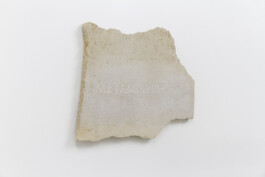
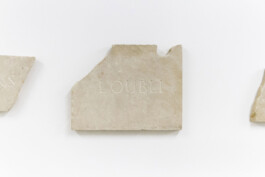
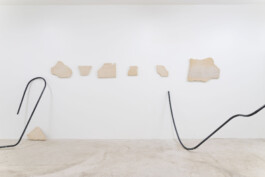
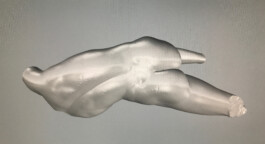
L’ordre présent est le désordre du futur, 2020. L'ordre présent est le désordre du futur is a quote from Louis Antoine de Saint-Just, a revolutionary who was guillotined in 1794 at the age of 26. In 1989, Ian Hamilton Finlay translated this phrase into English, then engraved it in stone blocks for his work Little Sparta).
Broken marble statue by Eugène Viollet-le-Duc, PLA 3D printing, lead pencil inscription, plywood base, Château de l'Emperi, Salon-de-Provence.
The statue on display has stood the test of time, and was most probably vandalized by students in 1969. The reclining ephebe, without its original base, reflects an image in tension, blending beauty and catastrophe, knowledge and the imaginary, grandeur and collapse. Several narratives are possible: does his posture evoke his own history, or is it an echo of contemporary violence in the face of a representation of today's youth? Between archaeological and sculptural gesture, the public is offered formal and historical bridges questioning the place of youth in a society struggling to make itself heard.

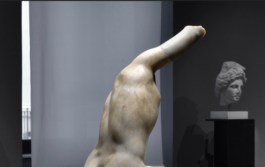
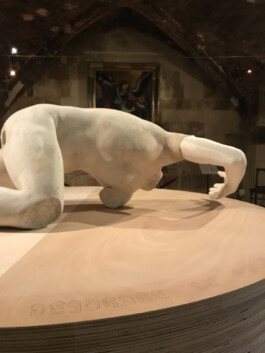
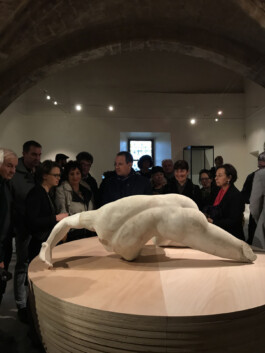
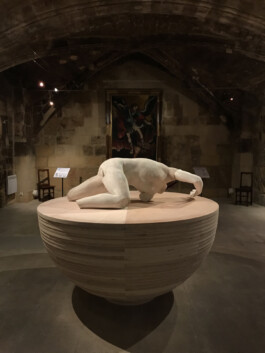
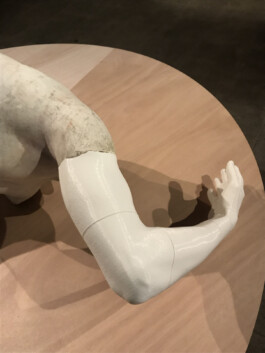
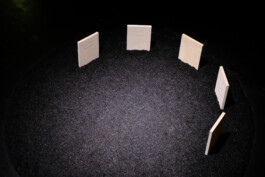
Le Cimetière du réconfort, 2021, Sandstones, asphalt, engraving, metal base. Biennale d’arts numériques : Jusqu’ici tout va bien ?, 104, Paris, Curator : Gilles Alvarez et Jos. Manuel Gonçalves.
We often hear sentences like "It'll be okay", "That's life", "Don't worry", "Forget it", "Everything will be fine", said to push away a realitý without providing a solution. They exist to reassure oneself that so far, so good.
The steles arranged in an arc as they might be in a memorial cemetery that's made with the materials of our cities: Sandstones, like Haussmann buildings, the ground, lifeless, is asphalt, like the roads and our cities’ floors.
With a touch of cynicism, the idea of comfort is removed, with the aim of questioning the notion of ease in our Western lives, which prevents us from putting ourselves into action. (There's the idea of removing a lexical field or habits in the hope of changing our ways of doing and being).
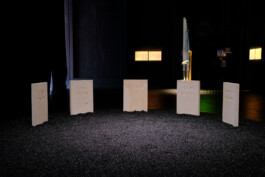
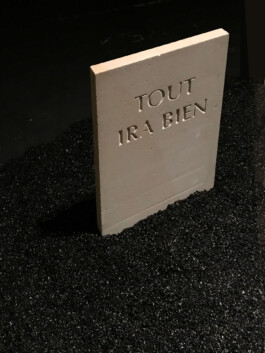
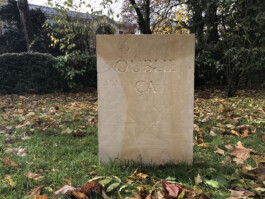
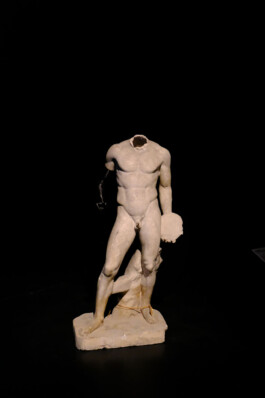
Le Discophore, 2020.Plaster made by l’Atelier de moulage du Louvre (end of XIXe s.), 3D printed PLA. Biennale d'arts numériques : Jusqu'ici tout va bien ? 104, Paris, currated by Gilles Alvarez et Jos. Manuel Gonçalves.
Research by leading scientists and a thirst for constant innovation led to the announcement in 2020 of the (imminent) creation of Homolibri. A species that is free to transform itself as it pleases, to become any reflection it wishes. Humans mix with nano-technologies and augment themselves. In this "new augmented world", prostheses are omnipresent in our daily lives, bringing objects to life. Statues, representing ancient canons of beauty, can be repaired, augmented, and even reborn. Time is no longer linear, its boundaries blurred. Image and appearance have become the watchwords of our times. The Discophore is in a posture of waiting, of reflection before the crucial moment, action is imminent. Sport was very important in ancient Greece and Rome, as a means of honoring the gods. Today, man is still in this quest for improvement and performance, and the male beauty canon has changed little over the past 2,500 years. With the help of prostheses, A.I. and research into transhumanism, the man of 2020 dreams of immortality and wishes to measure himself against the divine, to defy history.
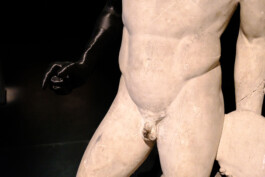
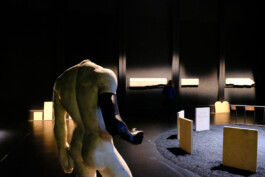
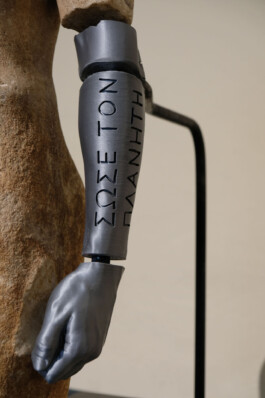
Le relais, The relay, Impression 3D en PLA gris, inscription grecque, métal, céramique, émaux, inscription grecque, au Louvre à Paris.
The left forearm missing from the ancient Kouros is replaced here by the prosthesis of a modern-day young man who, like the ancient Greeks, does not dissociate physical beauty from that of the mind. His arm is marked with an inscription:ΣΩΣΕ ΤΟΝ ΠΛΑΝΗΤΗ ΑΥΤΟΚΤΟΝΑ which means: "Save the planet. Kill yourself."
My generation is marked by an awareness of the harmful and destructive impact of our societies on biodiversity. The inscription is also the title of a musical composition by Chris Korda, apostle of the "Church of Euthanasia". Part archaeological gesture, part sculptural gesture, this body fragment carries a message that we don't know whether it comes from ancient Greece or is an injunction from our generation.
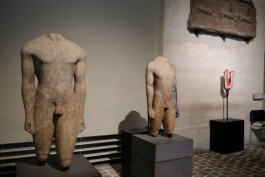
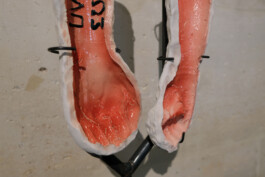
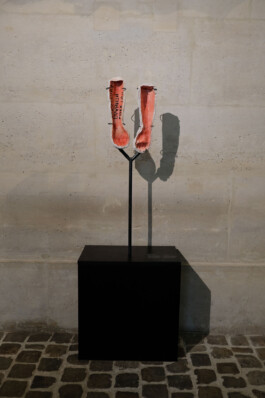
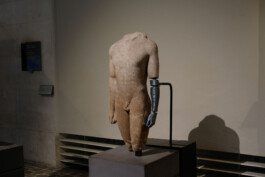
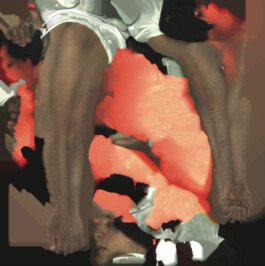
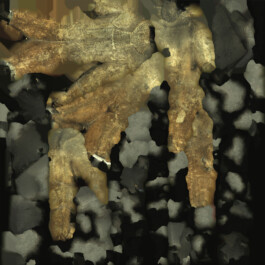
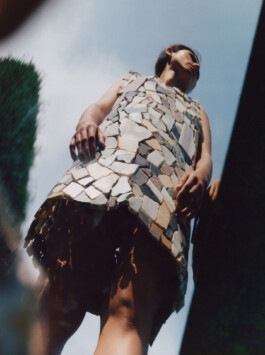
Cent marbres, 2018. Marble mosaic, mesh, epoxy glue. Unique piece, weight: 16 kg, at galerie Graf and Espace Voltaire, Paris.
The pieces of marble are reclaimed scrap from marble makers. The idea is to wear what no longer has value in the eyes of a company, or a society. The mosaic is presented on a wrought-iron rack. It is fixed, but once carried the sound of marble fragments can be heard in the exhibition space, and the mosaic, usually still, is here set in motion (thanks to the model's movements). The classical rules of this art are turned on their head.still.The adornment influences the model's walk, causing him or her to slow down, as if petrified, or conversely, as if the statue were becoming human.

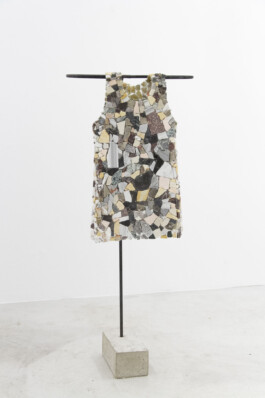
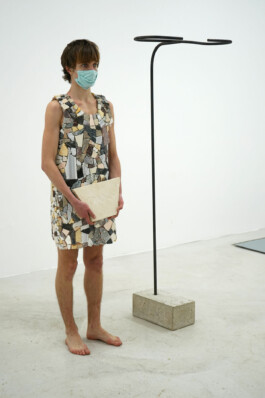
Temps sculptés, 2017 . Marbles, water-jet cut, smartphones, dim. variables. Exhibition for VAGUE, graduation diploma from the Beaux-Arts de Paris, supported by Jean-Marc Bustamante.
For Temps sculpté, the veins of age-old marble seem to move, as if they were coming to life. As if time wanted to wake up and change shape. The video of a tarpaulin flapping in the wind evokes this attempt to transform one state into another. The video takes the environment by surprise as it expresses its ardor, its anger, its uprising. For an instant, this gray tarpaulin becomes an animated sculpture, a drape as captivating as Antonio Corradini's La Pudeur at La Chapelle Sansevro. We begin to forget its original purpose (here, to protect hay bales from the rain). Its role now is to give us to see the landscape differently.
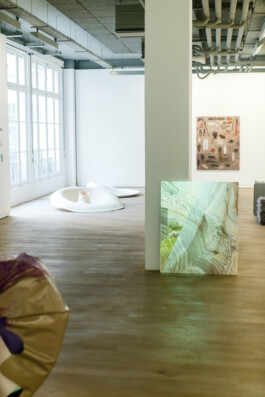
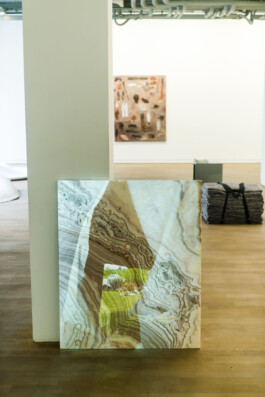

La korà, 2018. Ceramics, inscriptions of an excerpt froma poem from the collection Entre les ombres by Nikos Erinakis (Desmos edition), dimensions variable.
The Beaux-Arts de Paris has a considerable collection of statues. One of them was next to the mosaic studio. I decided to investigate its history. It's a study of Kor. 684, on display at the Acropolis Museum, and marks a break with Ionian kores, as it has a natural, unsmiling air.
This style of sculpture of a young woman bringing offerings directly echoes the economic state of Greece, which is selling off its productive forces to repay the interest rates. The prints of the Kor. deliver a message. In these fragments of Kor. skin are inscribed poems by Nikos Erinakis, a young poet living in Athens, and other fragments of text written by myself.
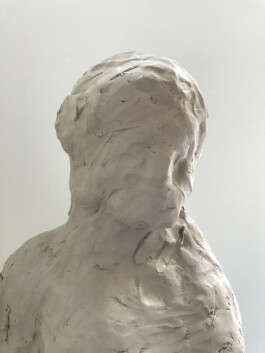
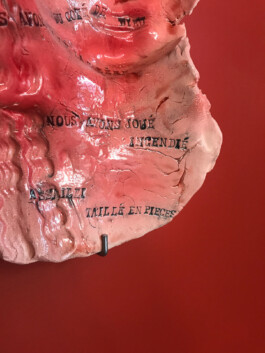
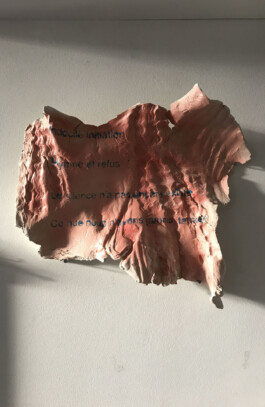
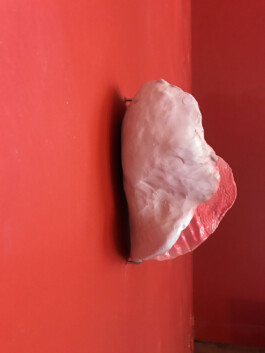
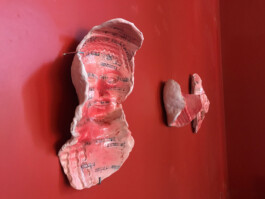
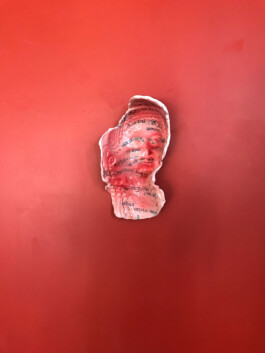

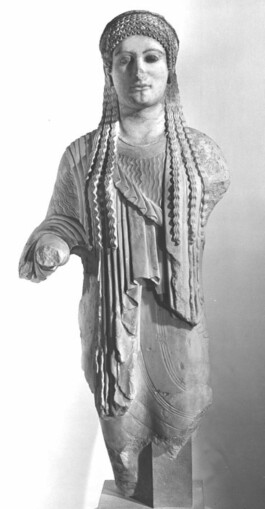
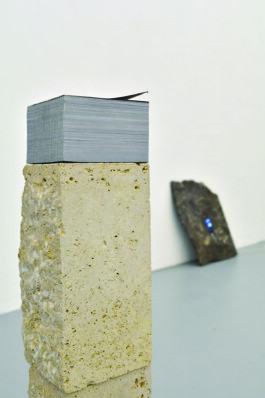
La pierre qui ne sourit pas, 2017.
Filippos Koutsaftis' film was shot over 10 years in Eleusis, a small industrial town on the outskirts of Athens. It is linked to the myth of Demeter, goddess of agriculture and fertilitý. Koutsaftis observes modest and grandiose daily activities, discovers evidence of its ancient face embedded in the walls of contemporary life. He captures what survives in the present, captures this battle between past and present.
Memory is the cement/mortar of two different eras, which sometimes collide. In this work, the edition is a series of screen captures from the film (Vostf) by Filippos Koutsaftis. The book object provides an intimate, everyday link with Koutsaftis' formal and literary poetry. It is a translation of the film into a material format, allowing the reading of short extracts that can stand on their own, like a collection of poetry.
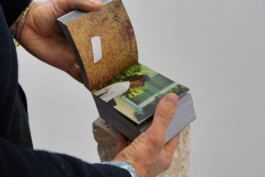
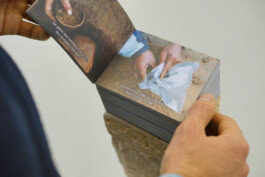
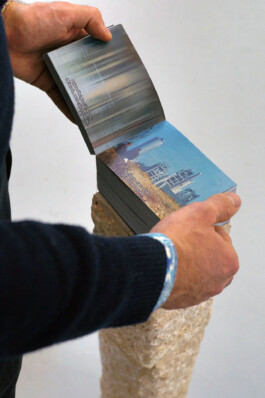
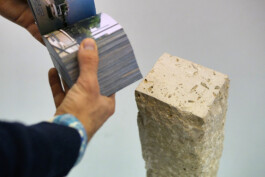

Temps sculptés, 2017. Marbles, water-jet cut, smartphones, dim. variables. Exhibition for VAGUE, graduation diploma from the Beaux-Arts de Paris, supported by Jean-Marc Bustamante.
In this installation, the veins of age-old marble seem to move, as if coming to life. The video of a tarpaulin flapping in the wind evokes this attempt to transform one state into another. For a moment, this gray tarpaulin becomes a captivating drape, an animated sculpture. We begin to forget its original purpose (protecting hay bales from the rain). Its role now is to give us a different view of the landscape.
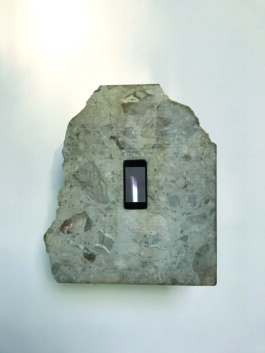

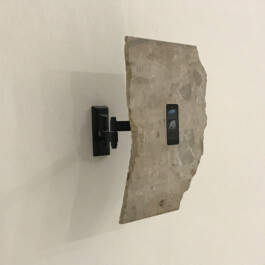

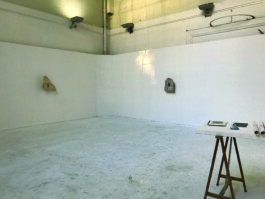
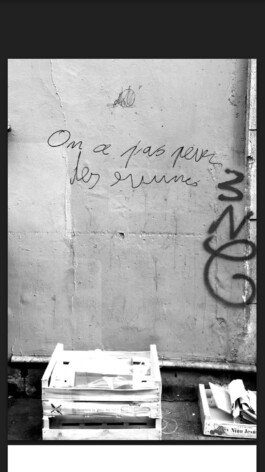
On n’a pas peur des ruines, 2018. Naxos marble, engraving, gold leaf, variable size.
On n'a pas peur des ruines is a piece based on a photograph taken in the street (during the social Nuit Debout movement). This quick inscription written in marker on a wall is here frozen in pieces of marble. The codes of epigraphic writing are reversed : graffiti is enhanced and made permanent in marble and by the treatment of the letters in gold leaf. The phrase is taken from a quotation by the Spanish revolutionary, Buenaventura Durruti:
"We are not afraid of ruins.
We can build too.
We built the palaces
and the cities of Spain {...}".

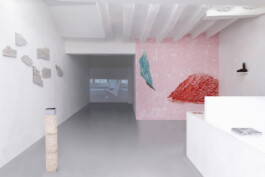
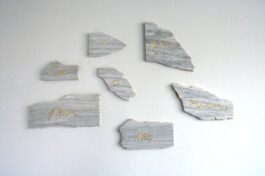
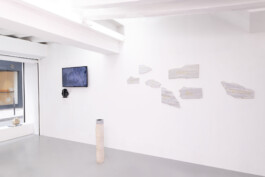
La dimension murale, 2021-2017 Cut book The Hiden dimension, from Ed. T. Hall, plaster, graphite, 40 Å~ 500 cm, at Aubervilliers, France. Exhibition Le MUR . l'Entre Monde and at Maracay, V.n.zuela, in 2021.
This site-specific work transforms the wall into a collective reading space. The book, The Hidden Dimension by Ed. T. Hall, is laid out page by page, glued to the edge to create a skin on the wall. It becomes fragile, alive, reacting to the passage of viewers. The wall on which the piece was inscribed will be demolished to make way for a new building. The anthropologist talks about the living spaces needed in different cultures. The future situation of this wall echoes Ed. T. Hall's book.
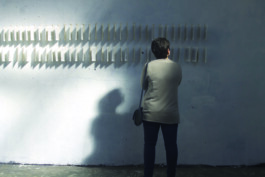
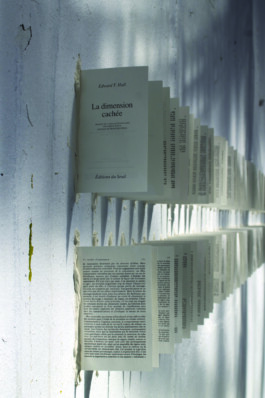
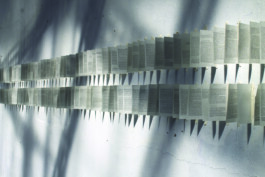
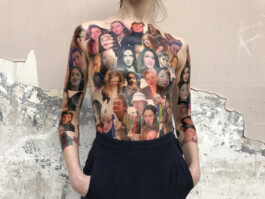
Autoporté, 2017. Temporary tatoo for Nouvelle Collection organised by Nefissa Belhadjali at Beaux-Arts de Paris. Model : Tempérance Cole.
Thanks to social networking, the art of the self-portrait is at its peak. The images we post reveal information about each user. With Autoporté, I chose a person I didn't know, then collected their photos and selfies on facebook, instagram and snapchat. This temporary garment is made up of large photographic scales that cover the performer's torso. She is dressed by her own image. Her portraits are distorted as she walks and her bust moves, questioning our relationship to our image and identity on social networks.
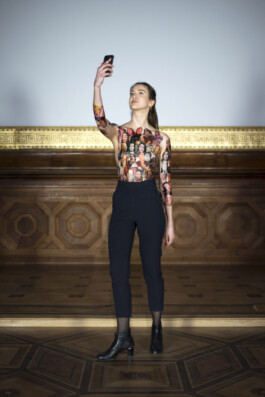

La vague
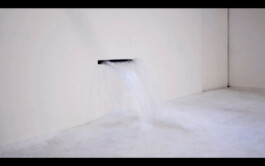
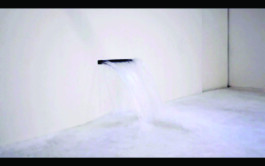
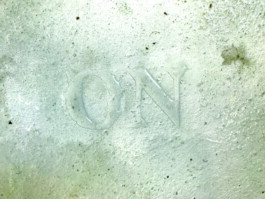
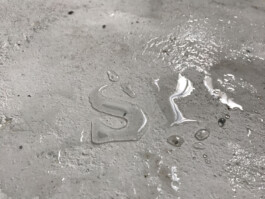
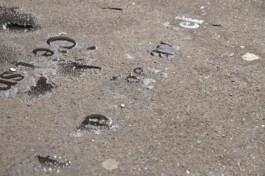
Extraits de paroles
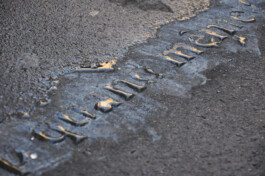
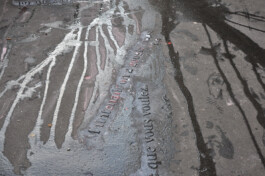
Evenements potentiels
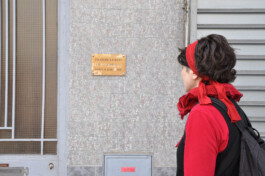
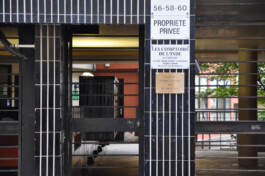
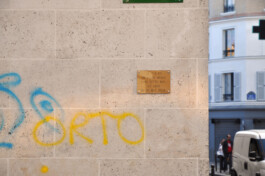
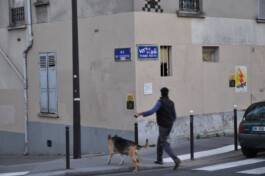
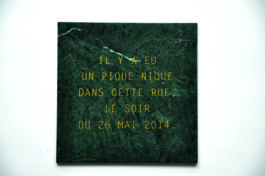
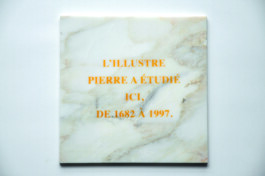
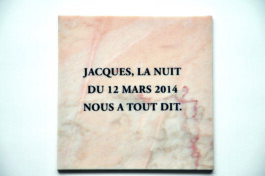
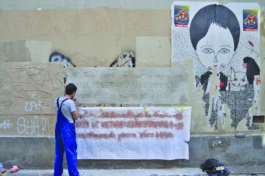
USTAMK, 2014.Two sgraffiti 2 x 0, 7 m & 1, 20 x 1, 50 m Xe arrondissement de Paris.
At the beginning of 2014, following outrage on social networks, the Turkish government decided to ban Twitter and Youtube for several weeks. Journalist Onder Aitak received a 10-month suspended prison sentence for insulting Recep Tayyip Erdoğan in a subtle play on words on Twitter. The first sgraffito is the journalist's tweet in Turkish. The second explains the pun in French and Mr. Aitak's condemnation. The fact to build a support and settle in the public space provoked several discussions and debates around democracy, freedom of expression, the rights of ethnic minorities, the act of writing, craftsmanship, etc.
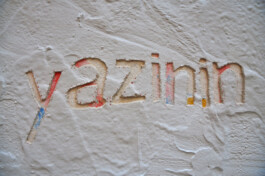
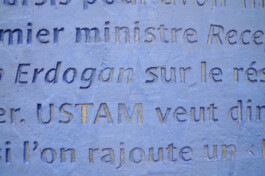
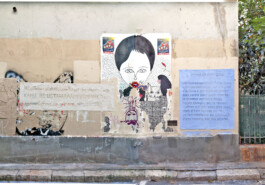

Mur des-amours, 2023. Engravings on marble, gold leaf, sandstone base, dimensions variable.
Sharing his desire with the other residents to work on Love in relation to the history of the place, Timothée Chalazonitis collected exchanges of love that they had recently had with their sweethearts. From these intimate words, he selected fragments and engraved them to create a wall reflecting the varied emotions that run through us when we're "in love". A bit like Ex-Voto, the engraved plaques are hung on a wall in front of which we can to recall our past states of love and those that are still with us to this day.

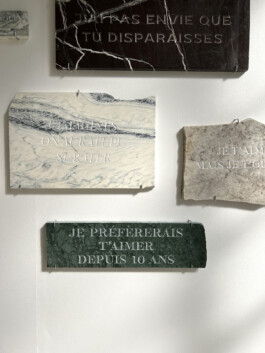


La découverte, Hand-carved stone bust and head, reproduction of documents from the archives of the city of Versailles. Dimensions variable, 2023.
The artist began her art-residency by visiting the city archives to obtain more information about the Château de La Maye, and noticed that two "famous" couples had stayed there: The Duke and Duchess of Windsor and King and Queen Geraldine of Albania. He also found a document stating that King Zog I had commissioned a Versailles sculptor to create a statue of his wife, Geraldine of Albania. And a letter recalling the couple's hasty departure due to the arrival of the Germans, who prevented them from taking all their possessions. The letter mentions that "one day they'll be able to come back and get them". This sentence stuck in his mind, and he decided to collaborate with archaeologist Matéo Martorella to help him carry out a dig in the Château garden in the hope of finding After several days of searching, they discovered a sculpted head and bust of Geraldine of Albania buried at the bottom of the Château, in the hope of being able to find them later, after the war. This archeological fiction creates exchanges between visitors and the inhabitants of Versailles, where doubts and imaginations work together to disconnect us from the present.
Remerciements de l'artiste à Hugues Moncelet, Surya David White, Léna Chalazonitis, l'Institut Archéologique d'Albanie, et toustes les résident.es qui lui ont partagé leurs regards et leurs écrits.
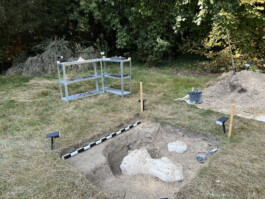






Courage et peur, Bas-reliefs carved in sand stone 60 x 30 cm, 4.5 cm thick, 2023.
As part of his residency at Château de La Maye, the artist sought to explore the history of the site. He discovered that two royal couples had stayed there, which gave him the opportunity to confront his apprehensions and desires: to talk about love and to work with stone in volume (3D). The result of her residency is three interlinked works: "La découverte", "Wall of Love" and "Courage and Fear".
Timothée Chalazonitis collected, from other residents, exchanges of love that they had recently had with their sweethearts. From these intimate words, he selected fragments and engraved them to create a wall reflecting the various emotions that run through us when we're in love. The two bas-reliefs, Courage and Fear, combine drawing and typography, signs and words. These symbols evoke the themes of time and love, and are linked to the person he loves today.
Remerciements de l'artiste à Hugues Moncelet, Surya David White, Léna Chalazonitis, l'Institut Archéologique d'Albanie, et toutes les résident·es qui lui ont partagé leurs regards et leurs écrits.



Saxifrage, 2023. Fragment of a text by sociologist Marie-Jos. Mondzain at the Saxifraga.Politica meeting in 2005.12 blocks of 25x25x25 cm in Tuffeau,in Saumur.
Engravings co-created with Bruno Coubernoux and Nobouko Nansenet. Creation project for the Académie des Savoir-faire of Hermès Fondation. Marie-José Mondzain was fond of talking about saxifrages, small plants that live in the cracks of rocks, and whose root systems can sometimes break off several-ton chunks of cliff.
"It's life that emerges in the midst of pebbles
It's the mobility of play that shakes
the sleep of things".
For the occasion, I designed a typography creating more angles, playing more with the vibrations of light.
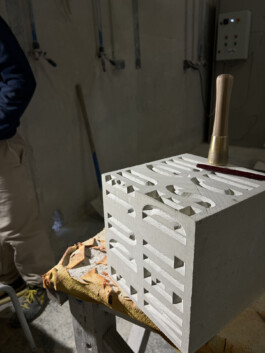





E se domani, Engraving, Sandstone, recording Luigi's singing, Tour Orion.
"What if tomorrow I couldn't see you again?
Suppose you got tired of me?
What if tomorrow, and I stress 'if', out of the
blue I came to lose you. I'd lose the whole
world, not just you".
These are the words Luigi sings to us, a cappella, in the back of his store. Along with my friends, this Venetian welcomes us to his store, amidst lots of lots of clothes and accessories bought fifteen years ago, which he sells without being in a hurry. After a few exchanges, he sits us down, climbs two small steps and sings the famous E se Domani, first performed by Mina in 1964. Without really knowing why, Luigi gives us this gift. The sound of the recording made at this moment is broadcast among the stones, those usually stored in my studio.
On a fragment of column is engraved the beginning of the song.



Le chant capital, Marble, Saint Maximin stone, water-repellent chipboard, metal, stone dust, dimensions variable, Orion Tower.
What would be the mermaids song of our times ?
What words could we hear that would make us want to follow them and plunge with them to the bottom of the sea ?
What promises and desires are we willing to follow at the risk of losing our sanity ?
The installation plays with the raw architecture of the exhibition space.
These bird-women prowl around the bust of Ulysses hanging from the mast. A poem is discreetly laid out on the floor, made up of the dust from the heads of the mermaids carved in stone :
"The capital song swallows up any other melody that tries to rise. It's the dominant song that the world likes to hear to reassure itself. It
grabs us by the scruff of the neck and accompanies us into the deep, dark waters of humanity."






Until the end, 2023 Limestone (construction waste), engravings, ultrasound gel, charcoal and burnt walls.
Two engravings face each other: Watch until the end and Wait for it. They are hung on walls that still bear the scars of a fire. These are phrases that can be read on videos we watch daily on our social networks. They question our relationship with time and our inaction in the face of the current state life. Between these two dominant injunctions, on the floor, there's a silence etched into the concrete and rechambered by an aspect of thick black petroleum, able to reflect the spectators and the play of natural light that crosses the exhibition space. We are drowned in a flow of information and images. Everything seems designed to make us consume even more content. To draw the eye away from seeing and kill the action.




Le lancé, 2021 The throw, fine canvas printing, PLA 3D printing, marble scrap, metal. Ergologre exhibition at Espace Voltaire, orchestrated by Léo Landreau.
A colorful flag catches the wind, and is animated by the passage of the public. An image is proposed, playing between abstraction and figuration, photography and painting. We see fragments of the human body and a bright orange drape, which is the flattening of the texture of the white statuette fixed underneath.
A draped young woman holds an object in her hand, ready to throw it. Masked for protection, she hides her face and seems to be rebelling. She is the Koré of modern times, the representation of youth. In 1764, Winckelmann described Greek white as the pinnacle of art. Ancient white even became a political argument in 1830, when the Greek nation emancipated itself from the Ottoman yoke, and "purified" itself of its bright colors. Later, these statues were reproduced and distributed in plaster, enabling the Fascist and Nazi regimes to establish their theory of Aryan superiority. This rejection of polychromy has been a historical lie for centuries. women and men of ancient Greece.



Nos Métamorphoses, 2021. Our metamorphoses, trajan engraving, stones: Saint Maximin. Ergologre exhibition, at Espace Voltaire, orchestrated by Léo Landreau.
"We live in the oblivion of our metamorphoses (...) But this echo that rolls all day long
This echo out of time of anguish or caresses (...) Are we near or far from our conscience (...)".
These four lines are taken from "Notre mouvement", in Le dure désir de durer, Paul Eluard, 1946, and read in Alphaville by Jean Luc Godard, 1965. This line echoes the strange times we're living in. During the exhibition, the "DANS" plaque is sometimes removed from the wall by a performer and moved to another space. "DANS" finds itself alone in an empty room, and the truncated quotation takes on a different meaning. The fragments allow the viewer to develop imaginations, hypotheses and games of interpretation.




L’ordre présent est le désordre du futur, 2020. L'ordre présent est le désordre du futur is a quote from Louis Antoine de Saint-Just, a revolutionary who was guillotined in 1794 at the age of 26. In 1989, Ian Hamilton Finlay translated this phrase into English, then engraved it in stone blocks for his work Little Sparta).
Broken marble statue by Eugène Viollet-le-Duc, PLA 3D printing, lead pencil inscription, plywood base, Château de l'Emperi, Salon-de-Provence.
The statue on display has stood the test of time, and was most probably vandalized by students in 1969. The reclining ephebe, without its original base, reflects an image in tension, blending beauty and catastrophe, knowledge and the imaginary, grandeur and collapse. Several narratives are possible: does his posture evoke his own history, or is it an echo of contemporary violence in the face of a representation of today's youth? Between archaeological and sculptural gesture, the public is offered formal and historical bridges questioning the place of youth in a society struggling to make itself heard.


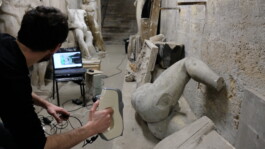

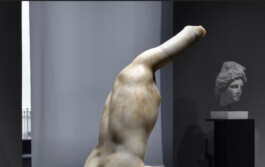




Le Cimetière du réconfort, 2021, Sandstones, asphalt, engraving, metal base. Biennale d’arts numériques : Jusqu’ici tout va bien ?, 104, Paris, Curator : Gilles Alvarez et Jos. Manuel Gonçalves.
We often hear sentences like "It'll be okay", "That's life", "Don't worry", "Forget it", "Everything will be fine", said to push away a realitý without providing a solution. They exist to reassure oneself that so far, so good.
The steles arranged in an arc as they might be in a memorial cemetery that's made with the materials of our cities: Sandstones, like Haussmann buildings, the ground, lifeless, is asphalt, like the roads and our cities’ floors.
With a touch of cynicism, the idea of comfort is removed, with the aim of questioning the notion of ease in our Western lives, which prevents us from putting ourselves into action. (There's the idea of removing a lexical field or habits in the hope of changing our ways of doing and being).
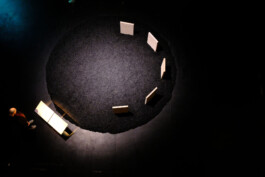


Le Discophore, 2020.Plaster made by l’Atelier de moulage du Louvre (end of XIXe s.), 3D printed PLA. Biennale d'arts numériques : Jusqu'ici tout va bien ? 104, Paris, currated by Gilles Alvarez et Jos. Manuel Gonçalves.
Research by leading scientists and a thirst for constant innovation led to the announcement in 2020 of the (imminent) creation of Homolibri. A species that is free to transform itself as it pleases, to become any reflection it wishes. Humans mix with nano-technologies and augment themselves. In this "new augmented world", prostheses are omnipresent in our daily lives, bringing objects to life. Statues, representing ancient canons of beauty, can be repaired, augmented, and even reborn. Time is no longer linear, its boundaries blurred. Image and appearance have become the watchwords of our times. The Discophore is in a posture of waiting, of reflection before the crucial moment, action is imminent. Sport was very important in ancient Greece and Rome, as a means of honoring the gods. Today, man is still in this quest for improvement and performance, and the male beauty canon has changed little over the past 2,500 years. With the help of prostheses, A.I. and research into transhumanism, the man of 2020 dreams of immortality and wishes to measure himself against the divine, to defy history.



Le relais, The relay, Impression 3D en PLA gris, inscription grecque, métal, céramique, émaux, inscription grecque, au Louvre à Paris.
The left forearm missing from the ancient Kouros is replaced here by the prosthesis of a modern-day young man who, like the ancient Greeks, does not dissociate physical beauty from that of the mind. His arm is marked with an inscription:ΣΩΣΕ ΤΟΝ ΠΛΑΝΗΤΗ ΑΥΤΟΚΤΟΝΑ which means: "Save the planet. Kill yourself."
My generation is marked by an awareness of the harmful and destructive impact of our societies on biodiversity. The inscription is also the title of a musical composition by Chris Korda, apostle of the "Church of Euthanasia". Part archaeological gesture, part sculptural gesture, this body fragment carries a message that we don't know whether it comes from ancient Greece or is an injunction from our generation.





Cent marbres, 2018. Marble mosaic, mesh, epoxy glue. Unique piece, weight: 16 kg, at galerie Graf and Espace Voltaire, Paris.
The pieces of marble are reclaimed scrap from marble makers. The idea is to wear what no longer has value in the eyes of a company, or a society. The mosaic is presented on a wrought-iron rack. It is fixed, but once carried the sound of marble fragments can be heard in the exhibition space, and the mosaic, usually still, is here set in motion (thanks to the model's movements). The classical rules of this art are turned on their head.still.The adornment influences the model's walk, causing him or her to slow down, as if petrified, or conversely, as if the statue were becoming human.



Temps sculptés, 2017 . Marbles, water-jet cut, smartphones, dim. variables. Exhibition for VAGUE, graduation diploma from the Beaux-Arts de Paris, supported by Jean-Marc Bustamante.
For Temps sculpté, the veins of age-old marble seem to move, as if they were coming to life. As if time wanted to wake up and change shape. The video of a tarpaulin flapping in the wind evokes this attempt to transform one state into another. The video takes the environment by surprise as it expresses its ardor, its anger, its uprising. For an instant, this gray tarpaulin becomes an animated sculpture, a drape as captivating as Antonio Corradini's La Pudeur at La Chapelle Sansevro. We begin to forget its original purpose (here, to protect hay bales from the rain). Its role now is to give us to see the landscape differently.


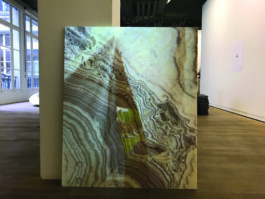
La korà, 2018. Ceramics, inscriptions of an excerpt froma poem from the collection Entre les ombres by Nikos Erinakis (Desmos edition), dimensions variable.
The Beaux-Arts de Paris has a considerable collection of statues. One of them was next to the mosaic studio. I decided to investigate its history. It's a study of Kor. 684, on display at the Acropolis Museum, and marks a break with Ionian kores, as it has a natural, unsmiling air.
This style of sculpture of a young woman bringing offerings directly echoes the economic state of Greece, which is selling off its productive forces to repay the interest rates. The prints of the Kor. deliver a message. In these fragments of Kor. skin are inscribed poems by Nikos Erinakis, a young poet living in Athens, and other fragments of text written by myself.









La pierre qui ne sourit pas, 2017.
Filippos Koutsaftis' film was shot over 10 years in Eleusis, a small industrial town on the outskirts of Athens. It is linked to the myth of Demeter, goddess of agriculture and fertilitý. Koutsaftis observes modest and grandiose daily activities, discovers evidence of its ancient face embedded in the walls of contemporary life. He captures what survives in the present, captures this battle between past and present.
Memory is the cement/mortar of two different eras, which sometimes collide. In this work, the edition is a series of screen captures from the film (Vostf) by Filippos Koutsaftis. The book object provides an intimate, everyday link with Koutsaftis' formal and literary poetry. It is a translation of the film into a material format, allowing the reading of short extracts that can stand on their own, like a collection of poetry.





Temps sculptés, 2017. Marbles, water-jet cut, smartphones, dim. variables. Exhibition for VAGUE, graduation diploma from the Beaux-Arts de Paris, supported by Jean-Marc Bustamante.
In this installation, the veins of age-old marble seem to move, as if coming to life. The video of a tarpaulin flapping in the wind evokes this attempt to transform one state into another. For a moment, this gray tarpaulin becomes a captivating drape, an animated sculpture. We begin to forget its original purpose (protecting hay bales from the rain). Its role now is to give us a different view of the landscape.






On n’a pas peur des ruines, 2018. Naxos marble, engraving, gold leaf, variable size.
On n'a pas peur des ruines is a piece based on a photograph taken in the street (during the social Nuit Debout movement). This quick inscription written in marker on a wall is here frozen in pieces of marble. The codes of epigraphic writing are reversed : graffiti is enhanced and made permanent in marble and by the treatment of the letters in gold leaf. The phrase is taken from a quotation by the Spanish revolutionary, Buenaventura Durruti:
"We are not afraid of ruins.
We can build too.
We built the palaces
and the cities of Spain {...}".





La dimension murale, 2021-2017 Cut book The Hiden dimension, from Ed. T. Hall, plaster, graphite, 40 Å~ 500 cm, at Aubervilliers, France. Exhibition Le MUR . l'Entre Monde and at Maracay, V.n.zuela, in 2021.
This site-specific work transforms the wall into a collective reading space. The book, The Hidden Dimension by Ed. T. Hall, is laid out page by page, glued to the edge to create a skin on the wall. It becomes fragile, alive, reacting to the passage of viewers. The wall on which the piece was inscribed will be demolished to make way for a new building. The anthropologist talks about the living spaces needed in different cultures. The future situation of this wall echoes Ed. T. Hall's book.
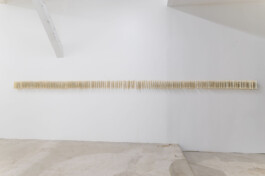

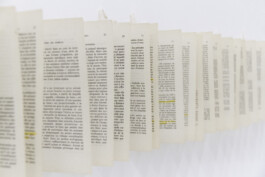



Autoporté, 2017. Temporary tatoo for Nouvelle Collection organised by Nefissa Belhadjali at Beaux-Arts de Paris. Model : Tempérance Cole.
Thanks to social networking, the art of the self-portrait is at its peak. The images we post reveal information about each user. With Autoporté, I chose a person I didn't know, then collected their photos and selfies on facebook, instagram and snapchat. This temporary garment is made up of large photographic scales that cover the performer's torso. She is dressed by her own image. Her portraits are distorted as she walks and her bust moves, questioning our relationship to our image and identity on social networks.



La vague







Evenements potentiels
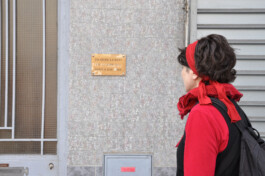
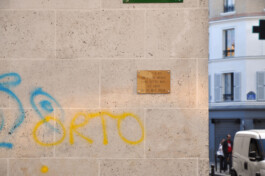


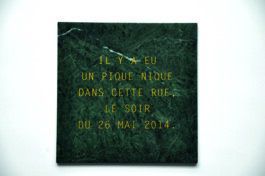
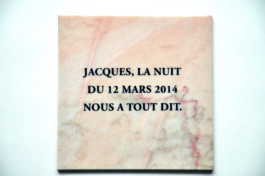
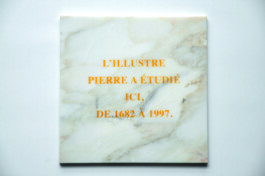
USTAMK, 2014.Two sgraffiti 2 x 0, 7 m & 1, 20 x 1, 50 m Xe arrondissement de Paris.
At the beginning of 2014, following outrage on social networks, the Turkish government decided to ban Twitter and Youtube for several weeks. Journalist Onder Aitak received a 10-month suspended prison sentence for insulting Recep Tayyip Erdoğan in a subtle play on words on Twitter. The first sgraffito is the journalist's tweet in Turkish. The second explains the pun in French and Mr. Aitak's condemnation. The fact to build a support and settle in the public space provoked several discussions and debates around democracy, freedom of expression, the rights of ethnic minorities, the act of writing, craftsmanship, etc.



